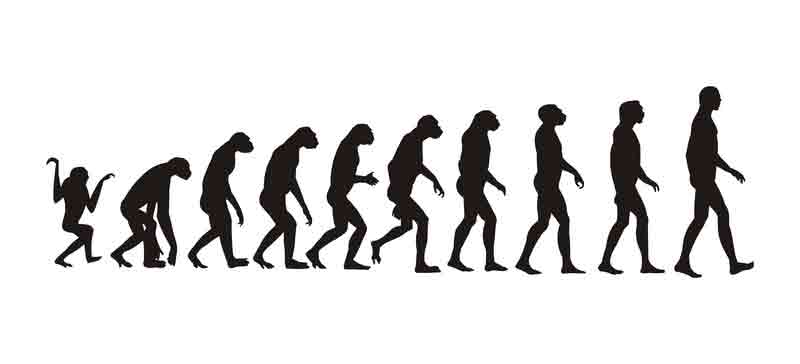Human Ancestors Walked Upright, Study Claims

The ancestors of humanity are often depicted as knuckle-draggers, making humans seem unusual in our family tree as "upright apes."
Controversial research now suggests the ancestors of humans and the other great apes might have actually walked upright too, making knuckle-walking chimpanzees and gorillas the exceptions and not the rule.
In other words, "the other great apes we see now, such as chimps or gorillas or orangutans, might have descended from human-like ancestors," researcher Aaron Filler, a Harvard-trained evolutionary biologist and medical director at Cedars-Sinai Institute for Spinal Disorders in Los Angeles, told LiveScience.
Filler analyzed how the spine was assembled in more than 250 living and extinct mammalian species, with some bones dating up to 220 million years old.
He discovered a series of changes that suggest walking upright-and not with our knuckles-might actually have been the norm for the ancestors of today's great apes.
In most creatures with a backbone, the body is separated roughly in half by a tissue structure that runs in front of the spinal canal. This "horizontal septum" divides the body into a dorsal part (corresponding to the back side of humans), and a ventral part (or the front half).
A strange birth defect in what may have been the first direct human ancestor led this septum to cross behind the spinal cord in the lumbar or lower back region-an odd configuration more typical of invertebrates. This would have made horizontal stances inefficient.
Sign up for the Live Science daily newsletter now
Get the world’s most fascinating discoveries delivered straight to your inbox.
"Any mammal with this set of changes would only be comfortable standing upright," Filler said. "I would envision this malformed young 'hominiform'-the first true ancestral human-as standing upright from a young age," he added, while the rest of the mutant's family and species continued to walk around "on all fours."
This change to an upright posture could have occurred "very abruptly, with just a few shifts in 'homeotic' genes, or ones responsible for how the body plan is laid out," Filler said.
The earliest known bipedal apes-those walking on two legs-were thought to date back as far as some 6 million years or so. Now Filler's new findings suggest the earliest upright ape known so far was the extinct hominoid, Morotopithecus bishopi, which lived in Uganda more than 21 million years ago.
"Humanity can be redefined as having its origin with Morotopithecus," Filler said. He detailed his findings online Oct. 10 in the journal PLoS ONE.
This research pushes back the date for the origins of bipedalism roughly 15 million years, to before the last common ancestor of humans, chimps, gorillas and orangutans, as well as lesser apes such as gibbons. The results match up with recent findings that suggest upright walking might have started before humanity's ancestors even left the trees.
"If you look at baby siamangs, which are a kind of gibbon, you'll see them walk bipedally on their own," Filler said. "It's just their natural way of walking. They never knuckle walk."
If bipedalism did evolve 21 million years ago, it more likely evolved to walk in trees than on the ground, said University of Chicago evolutionary anthropologist Russell Tuttle. "Twenty-one million years ago, there were a lot of trees around," he said.
Besides Morotopithecus, fossil vertebrae suggest three other upright ape species precede the 6 million year mark, Filler added.
"So you have this fossil evidence for bipedalism, and you have apes such as gibbons," he said. "Perhaps humans represent the primitive condition, and knuckle walkers such as chimps and gorillas are modified."
The ancestors of chimps and gorillas might have evolved knuckle walking as a speedier mode of travel, Filler suggested. If bipedalism did come first, that means gorillas and chimpanzees might have evolved knuckle walking independent of each other. Future analysis of the genes of those apes could show they came across knuckle walking in different ways, supporting Filler's ideas.
"I am getting the feeling that a revolution in our thinking about the origins of bipedality is now under way," said evolutionary anthropologist Robin Crompton at the University of Liverpool in England.










